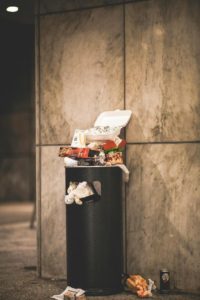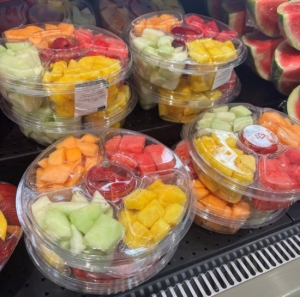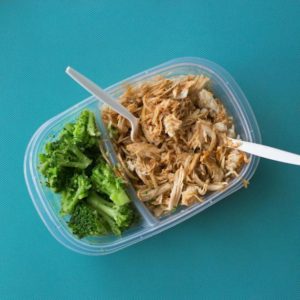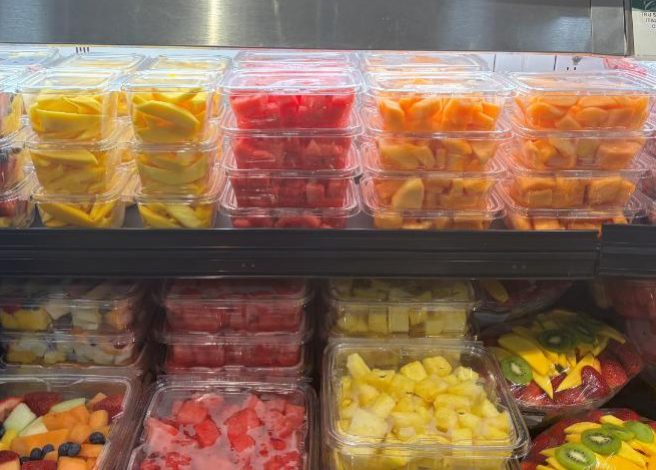Listen to the audio recording of this blog post or check out the featured Podcast about this topic.
At a Glance
- Quality packaging fights food waste in America by extending freshness and preventing spoilage through barrier protection and smart design.
- Sealing, portion control, and durability cut down on damage and over-consumption.
- Lightweight plastic reduces transport losses, lowering breakage and carbon impact versus heavy packaging.
- Investing in packaging pays off, balancing cost and sustainability while supporting fresher food for consumers.
Facing the Problem
The statistics are hard to believe. Feeding America says that 92 billion pounds of food waste ends up in dumpsters each year. At the same time, many families nationwide have empty dinner tables. Food waste in America presents a major issue for food business owners and mindful consumers. It means lost resources and poses daily challenges affecting profitability and core values.
This isn’t just waste. That’s 38% of our entire food supply disappearing. That’s 145 billion meals that could have fed the hungry. It’s $473 billion in value — more than the GDP of many countries — simply thrown away.
And who’s responsible? According to Feeding America, the food industry itself accounts for over half (51.7%) of this massive waste. Think about that: for every two plates of food produced in America, nearly one ends up in the trash.
You face a tough reality daily as a food business professional. You see potential profits wasted while trying to keep quality high, satisfy customers, and run a sustainable operation. Your success depends on solving this waste problem, but the path forward isn’t always clear.
We promise we’re not trying to bum you out with these jaw-dropping statistics. At Inline Plastics, we’ve led the way in food preservation for over 55 years, and today, we want to share valuable insights into what we’ve learned. We’ll provide facts and fresh tips about how you can help reduce shrink and get more food into tummies instead of trash cans.
Understanding the Food Waste Challenge
 It’s not a very fun adventure like Marty McFly has in Back to the Future. The journey from farm to landfill can be quite distressing to hear. Food waste in America comes from many places in the supply chain. This problem directly affects your business operations and profits. From the farm to the consumer’s plate, inefficiencies accumulate:
It’s not a very fun adventure like Marty McFly has in Back to the Future. The journey from farm to landfill can be quite distressing to hear. Food waste in America comes from many places in the supply chain. This problem directly affects your business operations and profits. From the farm to the consumer’s plate, inefficiencies accumulate:
- Production level: Crops left unharvested due to labor shortages and market fluctuations.
- Post-harvest handling: Inadequate storage facilities and transportation issues that lead to spoilage.
- Processing: Trim waste, equipment inefficiencies, and quality control rejections.
- Distribution: Overstocking, improper forecasting, and damaged goods during transport.
- Retail: Overstocked displays, packaging not displaying food properly, and outdated inventory management.
- Consumer level: Confusion about date labels, improper storage, overbuying, and food preparation miscalculations.
The environmental impact compounds the tragedy. When food decomposes in landfills, it releases methane, a greenhouse gas 25 times more potent than carbon dioxide. All the resources for this wasted food, water, land, energy, labor, and capital are wasted too. This harms your profits and sustainability goals.
Packaging’s Role in the Waste Problem
To solve food waste with better packaging, we first need to know how current practices add to the issue:
- Oversized packaging refers to products packed in amounts too big for consumers to use before they spoil.
- Non-resealable design: Once opened, many packages provide no way to preserve the remaining contents.
- Poor material selection: Inappropriate packaging materials that accelerate product degradation by not allowing proper transmission rates, which shortens shelf life.
- Limited shelf-life information: Packaging that fails to communicate proper storage or actual expiration.
- One-size-fits-all approach: Not providing different package sizes to meet various household needs.
- Excessive packaging: Overpackaging that wastes resources without improving preservation.

The Natural Resources Defense Council estimates that the average American family wastes around 25% of the food they buy. A big reason for this is “improper storage.” For food businesses, this translates directly to lost sales and customer dissatisfaction.
Solutions Through Better Packaging and Practices
Packaging Innovations That Preserve Profits
While plastic packaging has some environmental downsides, it is important for keeping food fresh and cutting down on waste. Proper packaging extends shelf life by protecting food from moisture, oxygen, and contaminants. Modern packaging technologies can help food business owners significantly extend shelf life, thereby reducing waste.
- Modified atmosphere packaging (MAP): MAP changes the gas mix inside the packaging. This slows fruit and vegetable ripening, keeping them fresher longer.
- Vacuum-sealed packaging keeps oxygen out, stopping oxidation in meats and cheeses. As a result, it greatly extends shelf life and keeps quality high.
These innovations keep food fresh from production to consumption. They give products time to travel from farms to tables instead of ending up in landfills. This also helps your inventory reach paying customers instead of going to waste.
Why Plastic Outperforms Other Materials in Preventing Food Waste
 Plastic packaging helps save food from waste more than other materials because of:
Plastic packaging helps save food from waste more than other materials because of:
- Strong barrier properties: Plastic is better at blocking oxygen, moisture, light, and bacteria than paper, cardboard, or bioplastics.
- Lightweight versatility: Plastics can be shaped easily. They are much lighter than glass or metal. This reduces transportation emissions and product damage during shipping.
- Transparency and consumer appeal: Clear plastic lets consumers see products before buying. This helps cut down on waste from unexpected spoilage found at home. Studies show consumers are more likely to purchase produce they can visually inspect.
- Cost efficiency: Plastic is affordable. This helps in using advanced preservation technologies without high costs. Using MAP and vacuum packaging could be too costly for many products if made with other materials.
- Temperature flexibility: Plastic maintains its protective qualities at different temperatures and moisture levels, staying reliable in the supply chain.
Studies, like the Trucost 2016 Dataset, show that glass, aluminum, and paper can harm the environment more than plastic. These substitutes can create up to four times the CO₂ emissions. They are heavier and require more resources to produce. And that statistic only covers emissions! Alternative materials:
- Require twice as much energy to produce
- Require six times as much water
- Generate five times as much solid waste as plastics
In the push for sustainability, it’s crucial to look beyond the surface. Not all alternatives are better, and understanding the full environmental impact helps us make smarter, science-backed decisions about packaging.
Financial Protection Against Inventory Shrink
In retail, “shrink” refers to inventory loss due to spoilage, theft, or errors — a significant concern for food businesses. Proper packaging plays a critical role in reducing this loss:
- Portion-controlled packaging: Smaller portions reduce waste for single consumers or small households
- Re-sealable options: Allow consumers to use what they need and preserve the rest
- Clear visibility: Transparent packaging helps consumers assess freshness before purchase
- Extended shelf-life technologies: Keep products saleable longer, reducing the frequency of discards
This means you get both environmental benefits and real savings (which can boost your profit margins!)
Strategic Actions for Food Business Professionals
Food businesses stand at the frontlines of the waste battle. As a food industry pro, here’s your comprehensive action plan:
- Audit your waste: Conduct regular waste audits to identify exactly where, when, and why food is being discarded. Track inventory losses and set reduction targets.
- Invest in quality packaging. Choose packaging that not only maintains product freshness but also aligns with your sustainability goals. Functionality matters — opt for designs that reduce waste and enhance product protection. While upfront costs are important, don’t overlook the long-term value. High-quality packaging can extend shelf life. Even a single extra day can lead to significant cost savings across the fresh food category — reducing waste, improving inventory efficiency, and maximizing product value. On the other hand, opting for cheaper alternatives may lead to increased shrink and greater financial loss over time. In the end, quality packaging isn’t an expense — it’s a smart investment.
- Optimize inventory management: Use just-in-time ordering and demand forecasting tools to reduce overstocking. Rigidly use the FIFO (First In, First Out) method.
- Educate staff: Train employees on proper storage techniques, handling procedures, and the importance of waste reduction. Make waste prevention part of your company culture.
- Engage with suppliers: Build strong relationships with suppliers. This helps ensure quality, timely deliveries, and flexible ordering options.
- Promote leftovers: Restaurants can serve suitable portion sizes. Encourage customers to take home leftovers in sustainable, resealable containers.
- Donate surplus: Partner with local food banks and recovery programs to give away unsold, edible food. The Good Samaritan Food Donation Act protects donors from liability.
Benefits of Reducing Food Waste
 When food businesses take decisive action against waste, the rewards are substantial:
When food businesses take decisive action against waste, the rewards are substantial:
- Financial benefits: You can cut costs from buying, storing, and throwing away unused food, which boosts your profit margins.
- Environmental impact: Less waste cuts methane emissions, saves resources, and shrinks your carbon footprint, boosting your sustainability credentials.
- Social responsibility: Redirecting surplus food feeds 47 million Americans facing food insecurity, showing your business is a force for good.
- Brand reputation: More consumers back businesses that show they care about the environment and society. This support gives these companies a competitive edge in the market.
- Regulatory compliance: Stay ahead of emerging regulations around food waste and environmental impact
According to the Champions 12.3 initiative, businesses see an average return of $14 for every dollar invested in food waste reduction. Waste reduction is one of the highest-ROI investments available to food businesses today. So, when you’re looking at packaging, a higher-cost, higher-quality premium package may provide a significantly higher ROI.
Waste Not, Want Not
Food waste in America is both an environmental issue and a business problem. It directly affects profits. You can cut waste and boost sales by making conscious choices, using better packaging and smarter business methods.
The journey begins with awareness but must continue with action. Each sealed container, optimized inventory system, and donation made shows progress, leading to a more sustainable and profitable operation.
Tackling food waste helps save resources and secures your business’s future in a market focused on sustainability and efficiency. The power to change this narrative lies in your hands, in your business practices, and in the choices you make each day.
Ready to transform food waste from a liability into an opportunity? Start with one of the strategic actions outlined above, measure your results, and build on your success. Your business — and our planet — will be better for it.
Are you interested in learning more about how plastic packaging can benefit your business? Explore our Learning Center today!

